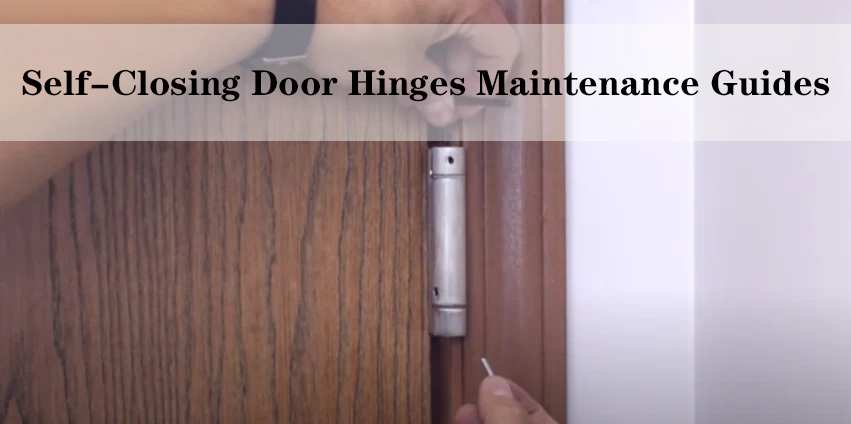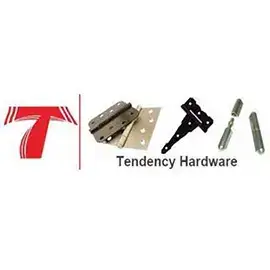In the world of doors and gates, the unsung heroes ensuring seamless operation are heavy duty hinges. These unassuming yet robust components play a pivotal role in bearing weight, facilitating movement, and bolstering security. As we embark on a journey through the realm of heavy duty hinges, we’ll not only unveil the diverse types that grace the hardware landscape but also dive into the art of their proper installation. So, whether you’re a homeowner seeking to fortify your entrance or an industrial manager aiming for unwavering functionality, fasten your seatbelts–we’re about to explore the world of heavy duty hinges like never before.
Different Types of Heavy Duty Hinges
Ball Bearing Hinges: These heavy duty hinges are equipped with ball bearings between the knuckles, allowing them to handle heavier loads and endure frequent use. They’re commonly used for doors, gates, and even industrial applications.
Weld-On Hinges: As the name suggests, these hinges are welded directly onto the gate or door frame. They offer exceptional strength and are often used in industrial settings where heavy loads are a norm.
Strap Hinges: Strap hinges are popular for their old-school charm and heavy duty capabilities. They consist of a flat strap that wraps around the door or gate, providing stability and strength.
Spring Hinges: The core mechanism of spring hinges involves a spring-loaded component integrated into the hinge’s design. When the door is opened, the spring inside the hinge is compressed. Once the door is released, the tension from the compressed spring is released, and it aids in gently closing the door. This process happens automatically, eliminating the need for manual door closing and ensuring that the door remains closed when not in use.
Heavy Duty Barrel Hinges: Heavy duty barrel hinges consist of two main components: a cylindrical barrel and a pivot pin. The barrel is attached to the edge of the door or gate, while the pivot pin is affixed to the frame or post. This unique design ensures even distribution of weight and allows the door or gate to swing smoothly without placing excessive stress on any single point.
Installing Heavy Duty Hinges: Step by Step
Tools You’ll Need:
- Screwdriver or Drill
- Screws or Bolts
- Level
- Measuring Tape
Different Types of Heavy Duty Hinges and Their Unique Installations
Understanding the distinct installation processes for each type is crucial to ensure their proper functioning and durability. Let’s explore the step-by-step installation methods for various heavy duty hinges, including ball bearing hinges, weld-on hinges, piano hinges, strap hinges, and spring hinges:
Ball Bearing Hinges
Ball bearing hinges are designed to withstand substantial weight and frequent use, making them a popular choice for heavy doors. Here’s how to install them correctly:
Positioning and Marking: Begin by positioning the ball bearing hinge on the door frame or gate. Make sure the knuckles align perfectly with the door’s edge. Use a pencil to mark the spots where the screw holes will be located.
Drilling Pilot Holes: With the locations marked, use a drill to create pilot holes. Pilot holes prevent the wood from splitting when you insert the screws.
Attaching the Hinge: Align the hinge with the pilot holes and insert the screws through the holes in the hinge, securing them in the pilot holes. Tighten the screws gradually, ensuring a snug fit without over-tightening.
Weld-On Hinges

Weld-on hinges are known for their robustness and are commonly used in heavy-duty applications. Installing them involves welding:
Precise Placement: Position the weld-on hinge precisely on the door or gate frame, marking the points where welding will occur.
Welding Process: Use welding equipment to weld the hinge onto the frame. Welding requires skill and precision to create a strong and durable bond.
Strap Hinges
Strap hinges are cherished for their classic appearance and robust support. Here’s how to install them:
Mounting Position: Position the flat strap part of the hinge on the door or gate. Mark the locations where screw holes will be drilled.
Creating Screw Holes: Use a drill to create holes at the marked locations, allowing screws to pass through.
Securing the Hinge: Insert screws through the holes, attaching the strap hinge to the door or gate. Tighten the screws securely but not excessively.
Spring Hinges
Spring hinges offer a self-closing feature, making them ideal for doors that need to close automatically. Installing them involves careful consideration:
Positioning and Marking: Position the spring hinge on the door and frame, marking the spots for screw holes.
Drilling Holes: Use a drill to create holes in the marked spots to accommodate the screws.
Attaching the Hinge: Place the hinge over the drilled holes, inserting screws to secure it. Adjust the tension of the spring according to your preference.
Heavy Duty Barrel Hinges
Heavy duty barrel hinges are known for their strength and ability to support substantial weight. They are commonly used in heavy doors, gates, and industrial applications. Here’s a step-by-step guide to installing these hinges:
Preparation: Gather the necessary tools, including a drill, screws, measuring tape, and a pencil. Ensure that you have the appropriate size and type of screws for the material you are attaching the hinges to.
Positioning: Begin by positioning the barrel hinges on the door or gate. Make sure they are placed at the desired height and align with the edge of the door or gate. For accurate placement, use a measuring tape and a level.
Marking Screw Holes: With the hinges in place, use a pencil to mark the locations of the screw holes on both the door/gate and the frame or post where the hinges will be attached.
Drilling Pilot Holes: Use a drill to create pilot holes at the marked locations. Pilot holes are crucial as they prevent the wood from splitting when the screws are inserted.
Attaching Hinges: Align the barrel hinges with the pilot holes and insert the screws through the holes in the hinge and into the pilot holes on the door/gate. Start by attaching one side of the hinge, ensuring it’s level and aligned. Then, attach the other side of the hinge.
Tightening Screws: Gradually tighten the screws using a screwdriver or drill. Be cautious not to over-tighten, as it could damage the hinge or the material.
Check for Smooth Movement: Open and close the door or gate to ensure that the hinges provide smooth movement. If there is any resistance or misalignment, adjust the hinges accordingly.
Fine-Tuning: If needed, adjust the tightness of the screws to achieve the desired movement and fit of the door or gate.
Tips for a Successful Installation
Measure Twice, Drill Once: Double-check your measurements before drilling any holes to avoid mistakes.
Use the Right Hardware: Choose screws or bolts that are appropriate for your door or gate material.
Have an Extra Hand: Installing heavy duty hinges can be easier with someone helping you hold the door or gate steady.
Final Thoughts
In the symphony of architectural hardware, heavy duty hinges take center stage, orchestrating the perfect blend of form and function. From the unyielding support of ball bearing hinges to the steadfast grip of weld-on hinges, and the timeless elegance of strap hinges to the automated finesse of spring hinges, each type carries a unique melody that resonates with specific needs. Armed with the knowledge of their individual characteristics and installation methods, you’re now poised to elevate your doors and gates to the pinnacle of performance. So, let your space resonate with the harmony of heavy duty hinges, where strength meets elegance, and functionality dances hand in hand with aesthetics.

























